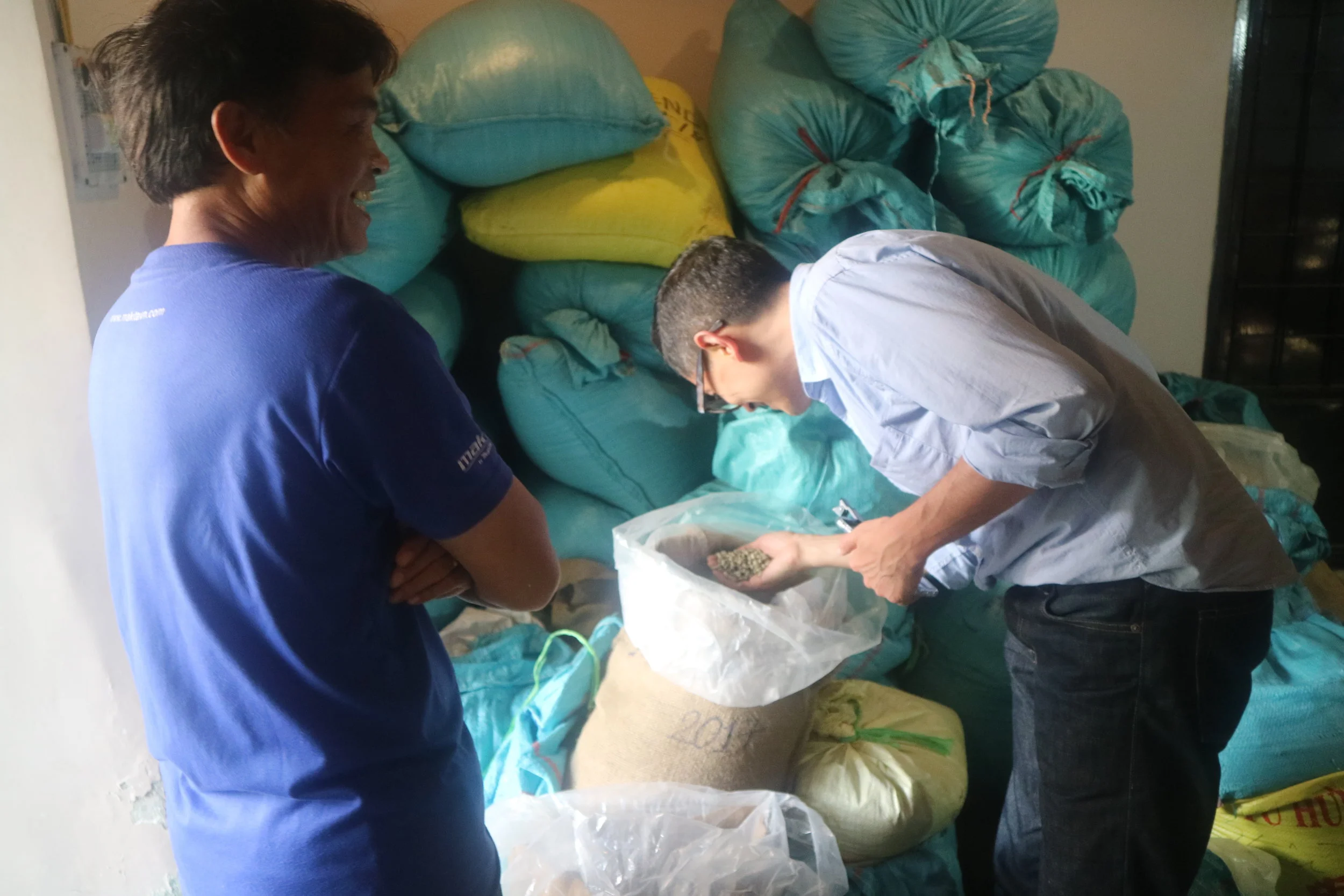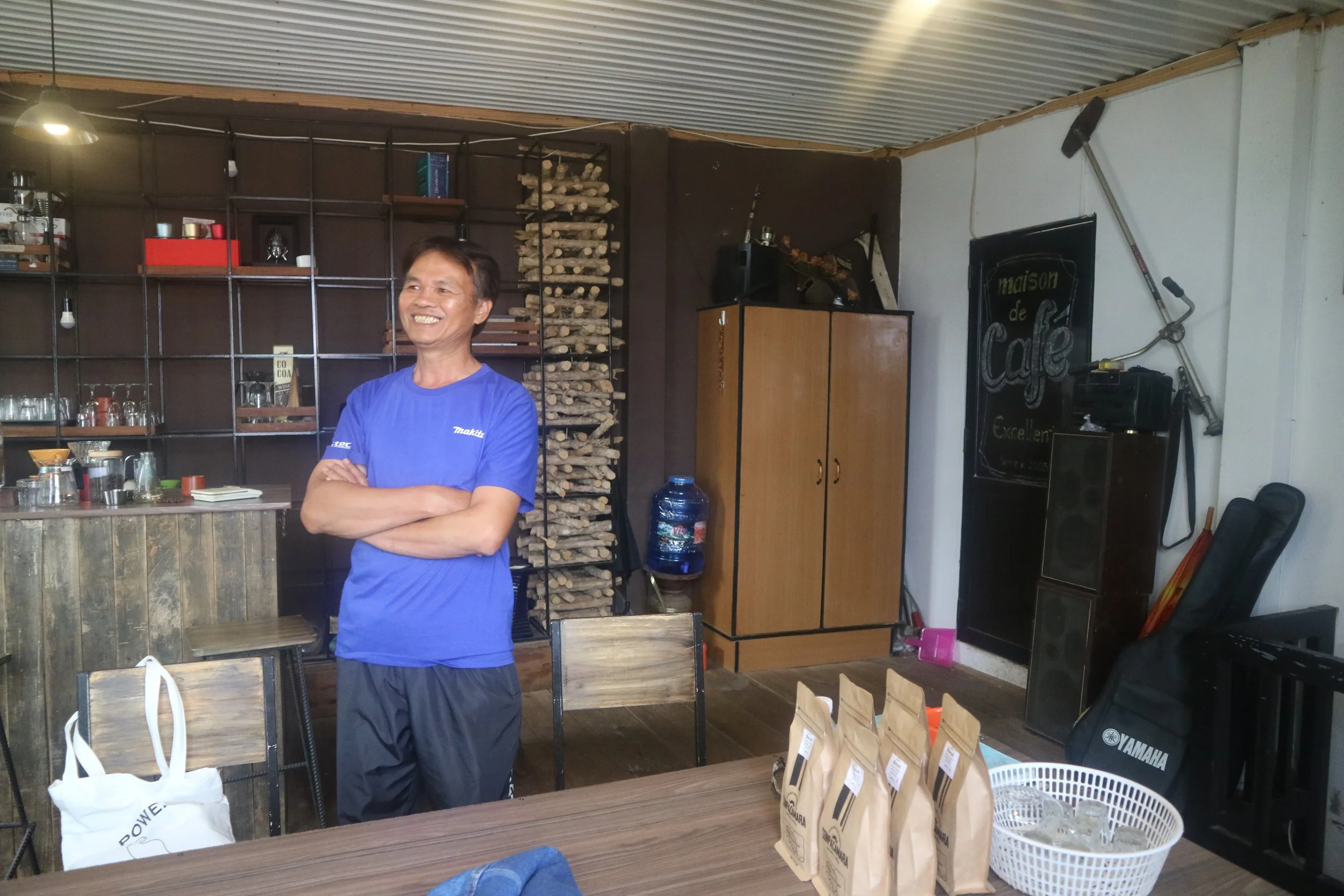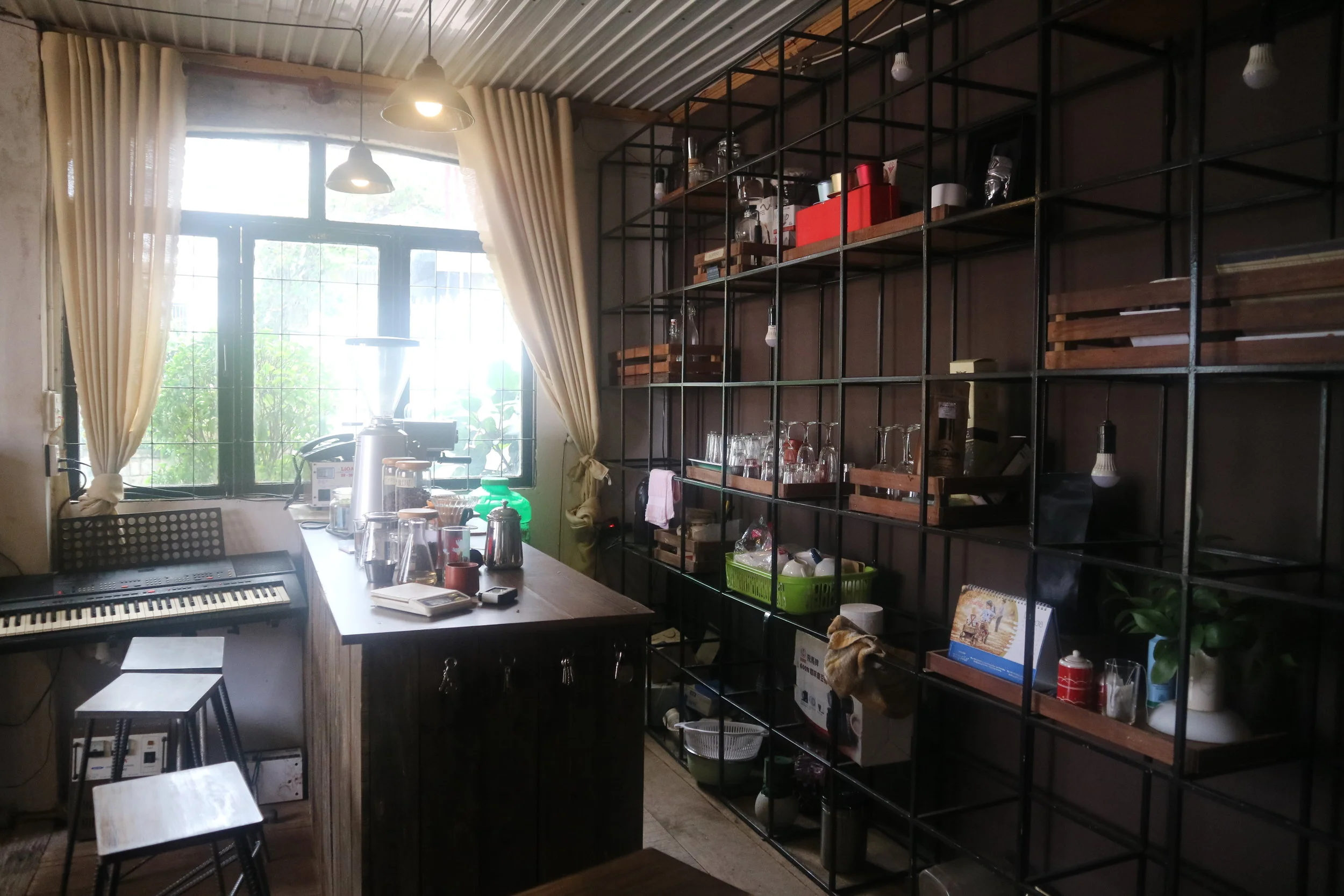Potentially Pacamara(?) and the Problem of Self-Appointed Experts
I first met Mr Son Nguyen, uncle in-law of La Viet’s Quang Tran (who will be napping for the entirety of this post), about 5 years ago. At that time, he had recently retired from his career in the automobile parts business, shifting to coffee growing (almost by accident - he’d initially considered growing flowers). With help and inspiration from his nephew, Son immediately took to the arabica-centric specialty coffee thing that Quang was slowly building with La Viet.
Son’s coffee club is a wonderful experience for any coffee enthusiast - an opportunity to get hands-on with coffee, from farm to cafe. If anyone plans to visit Dalat for a week or so during harvest, I’d highly recommend reaching out to Son to book some time as a volunteer on his farm. It’s guaranteed to be an educational experience. For those who have less time, his appointment-only cafe near downtown Dalat is a really good introduction to his passion for all things coffee. If one has coffee industry experience to lend, he’s an open-minded and humble listener.
Son caught my attention early on for a few reasons - he’s keen, sharp, and open minded. His coffee story is a common one for those not interested in the strong flavors and effects brought on with the traditional robusta offering. He didn’t think much of coffee, and in fact kind of avoided it due to the way it made him feel, not to mention the very unpleasant taste of what was widely available. Once Quang offered him a properly processed, roasted, and brewed cup of arabica, though, he had a transcendent moment that inspired him to take his farm to the next level. He began by making improvements at the farm - taking the leap from merely selling cherry to area collectors to processing his own. He constructed mini wet mill area, building a small washing area and clearing out a flat space for drying. He eventually built a greenhouse-style cover for his drying area to protect his parchment from the unpredictable rains during the transitional season.
He also began to notice differences between some of the trees on his farm, with some nearly twice the size of their neighbor trees of the same age. The plant, the leaves, the flowers, fruit, and most importantly the seeds were huge compared to his other coffees. This led him to separate the cherry coming from these trees to see if there were notable differences in the cup - spoiler alert: there were. Next, Son built a small nursery to start propagating more of these tasty giants. This is the part in the story where things start to go a bit differently to how I imagined they would go. With his new variety separation, Son really took it his own way. I had assumed we would follow a familiar path: identification and verification, improvement, growth in volume, sell domestically or export to specialty roasters abroad. He had his own ideas about what he wanted to do. I’ll get to that in a bit.
I want to talk about coffee identification - morphology, flavor, the brain’s need for closure and hasty pattern recognition - and the too-prevalent need for some coffee geeks to be fonts of all the coffee knowledge ever. First of all, I’m no coffee agronomist or botanist or horticulturalist. I’m not qualified nor experienced to make calls related to plant identification or husbandry. I have spoken to people much more experienced and specialized than myself, gathering their impressions about what has worked for certain areas and what hasn’t worked. I can tell a farmer what I’ve seen on other farms, what specialty coffee buyers tend to like in the cup, and how to gain market access. What I can’t do is tell them with any amount of certainty what type of plant they’re growing. I can tell them what certain popular varieties tend to look like (with the caveat that it’s not always that way). I can share anecdotes. I have some confidence in making recommendations about how to improve harvesting, processing and work flow, again based on what I’ve seen elsewhere and not based on the direct experience of owning or managing a farm or processing facility.
I feel like I need to put that out there because I’ve witnessed a tendency for “book-smart” coffee professionals to use conversations with other coffee stakeholders as a way to flaunt their knowledge, as a way to position themselves as experts on all things coffee, not just the parts with which they have direct experience. It reminds me of my days in college, taking poly-sci classes and brandishing my weekly learnings every chance I could get, whether it was appropriate, relevant, welcome, or not. Something to prove, and plenty of confidence.
In conversations with growers, who are often looking for any way they can to add value and find better markets for their crop, these tendencies can take a risky turn. It’s often baristas or roasters with two years’ experience (and maybe a certification or two to prove it) who flippantly make comments and recommendations on origin trips, telling farmers to engage in production methods that may not be appropriate for the region, climate, variety, or time of year. Luckily for the producers with whom I engaged in these early days, I had a totally legit grower-farm manager-processor with me - Quang Tran of La Viet. This allowed me to play the role of listener and student in these conversations, and I’m thankful.
These newly minted, self-appointed experts don’t have anything to lose, really. If the processing method they recommend doesn’t work out, they just don’t buy (or worse - they never had the intention to buy in the first place), leaving the farmer with a failed batch of experiment coffee no one wants to buy. Meanwhile, the grower, who has very little capital to spend, has invested in more space, labor, or capacity - based on the information of someone showing off something they read a week before their trip to the farm. We really should be more mindful of what we say in these situations - more listening than speaking is the key.
Coffee morphology is strange, and takes on more shapes than I could even pretend to understand. Catimors can sometimes look like bourbon trees (or any coffee variety for that matter), bourbon plants can look like typicas, and there are large mutant varieties of all sorts of cultivars. Cross pollination of self-pollinating plants can lead to all sorts of offspring, and hybrids can produce regressive offspring (producing seeds of their dominant parent cultivar, and reverting). It’s now very fashionable in the Vietnam specialty coffee landscape to talk about varieties, to the point of people traveling around growing areas “identifying” varieties based on little more than Google image search-supported guesses, hearsay, and wishful thinking. This leads growers to believe that they should be getting premiums that may not exist, while feeding into an unreliable network of hearsay and conjecture.
I’m not sure who was the first person to say the word “Pacamara” when visiting Son’s farm, but he really took to it and branded himself immediately - Son Pacamara. I can understand the allure - the self-appointed coffee expert thinking they’ve stumbled onto a great discovery, and a grower looking for their great differentiator, for added value.
He and I have had numerous exchanges, in which he’s conceded that he may very well have Maragogype or some other large variety, as nothing has been properly tested nor confirmed. His suspicions and hopes lie in the name with which he’s branded himself.
DNA testing can be expensive for solo producers, and many don’t even know where to start. Which plant(s) to test? For a small holder grower with similarly-sized production capacity to Son’s, the cost of a few DNA tests can be an entire year’s profit or more.
I’d love to get his coffees tested, and I think he’d be a good steward of novel varieties. He’s savvy around homegrown marketing, is super resourceful and agile - a great salesperson. He’s one of the most passionate advocates for specialty coffee among the producers I know in the region.
For now, no one can really fault him for identifying a smart niche for himself and running with it, and I’m glad it has done well for him. Our last conversation consisted of plans to start seriously studying his trees (and their seeds), to find out what we can about them so he can move towards certainty about what it is he actually has. Who knows? He may have something that is unique to Vietnam, or even the specialty coffee world. We won’t know until we can get funding for the DNA tests he’d like to have for all of his coffee trees. Until then, the word “Pacamara” adds a lot of value for him, and I’m willing to concede that this is “good enough” for now, while on his path towards certainty. Perhaps a fund raiser for DNA tests should come next…






